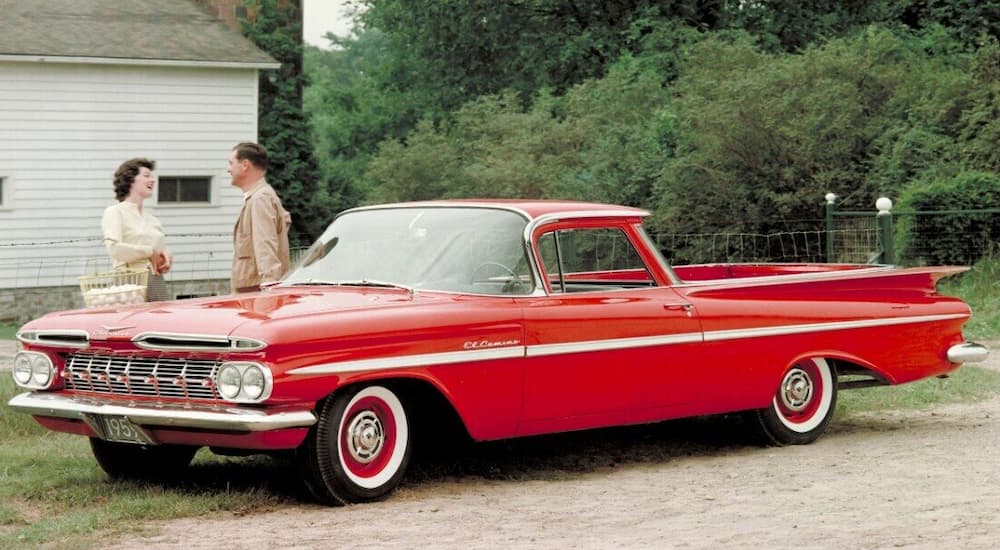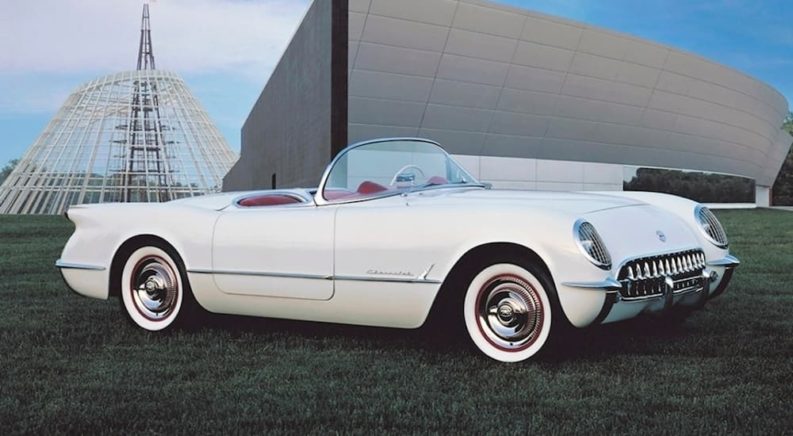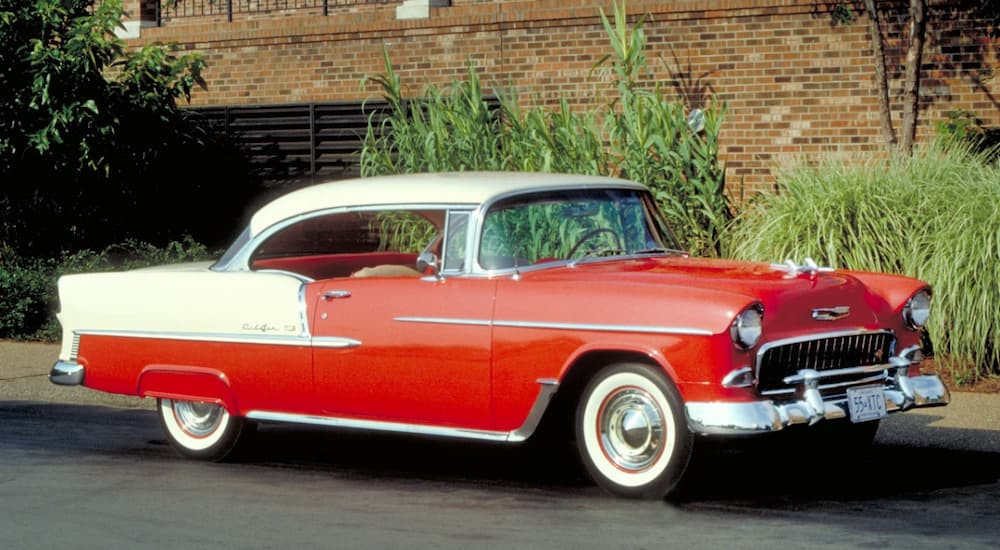There’s a reason many automotive enthusiasts refer to the 1950s as a “Golden Era” in automobile manufacturing. When you think about it, many stars aligned to create the perfect environment in which to rev up the American passion for driving. Start with the mass production of vehicles in 1908, throw in a couple of World Wars that saw the country aiming for innovation with limited supplies, then factor in the Baby Boom and rise of suburbia, and the resulting decade suddenly saw drivers flocking to Plymouth, Ford, and Chevy dealers in record numbers. The direct result was automakers racing to make the next best thing at a price most drivers could afford.
Indirectly, the huge bump in automotive production in the 1950s resulted in some of the most iconic American cars in history. If it hadn’t been for the sudden demand and the race to create the most innovative, most desirable, and most eye-catching vehicle of all, we might not have Classic Car Cruise-Ins today. Automakers included popular culture references in everything, from pastel colors inspired by home decor to rocket tail lights and aerodynamic wings that paid homage to the excitement of space exploration. Vehicles finally stopped looking like carriages and took on a personality all their own.
Despite steep competition, the best-selling brand throughout the 1950s was Chevrolet. The reason for this is clear – Chevrolet stepped up to the plate with incredible vehicles that have become nothing less than absolute icons. Let’s take a look at three of the 1950s Chevys that would change the way we drove forever.

#1 – The Car That Could Truck: The 1959 El Camino
Most historians – automotive and otherwise – agree that Chevy invented the SUV when the Suburban hit the roads in 1934. Putting a nine-passenger vehicle on a truck frame was innovative but clearly necessary, given that the Suburban is rapidly approaching its 100th birthday.
But what about putting a car and a truck together? In the late 1950s, both Chevy and Ford were doing some tinkering around with this concept. What if it had the utility of a pickup truck, in station wagon format, and drove like a car? The Cameo Carrier by Chevy was the first iteration and looked more like a truck than a car, but sales were dismal. Ford released the Ranchero in response, but Chevy perfected the formula with the 1959 El Camino.
Lots of bits and pieces went into the creation of the El Camino. The body and cab were styled after the brand new 1959 Brookwood coupe-styled station wagon, which was set on top of an X-frame chassis. Featuring front and rear coil spring suspension, the chassis was relatively new as well, having just been introduced for full-sized Chevys in 1958. Instead of building the bed with wood, as was the custom at the time, Chevy gave the El Camino its first corrugated steel sheet metal floor.
All told, the El Camino was 210 inches long with a box capacity of 32.5 cubic feet, but it was so much more than a low-slung work truck. The 1959 Chevy El Camino was also offered with the same trim level options as passenger cars built on the same platform, which opened up features previously only found on more deluxe vehicles like the Impala. Suddenly, drivers could fill their truck bed with tools and supplies and drive away on whitewall tires with power steering, power windows, power seats, and air conditioning. Additionally, drivers had the choice of selecting one of Chevy’s small-block V8 engines to power their two-tone, bat-wing pickup truck coupe.
The El Camino was low, fast, and mighty. In fact, after being reintroduced in 1964, the El Camino was in continuous production until 1987, when the Chevy S-10 took over as the light-duty truck Americans could count on. But if you happen to see a 1959 El Camino on the streets, you’ll know exactly what it is: the most stylish truck that has ever graced American roads.
#2 – The Car, the Myth, the Legend: The 1953 Corvette
If you were to put them side-by-side, the 1953 Corvette and the current model year Corvette would have very little in common besides four wheels and two seats. In fact, the first Corvettes – all 300 of them – weren’t much more than an experiment born to keep the Chevy brand name fresh for younger drivers. The goal was to marry the design of European sports cars to the existing technology at Chevrolet, resulting in a chopped-down chassis and a fiberglass body powered by a six-cylinder engine. But amazingly, when the first prototype debuted at the January 1953 Motorama in New York City, the American love affair with the Corvette began.
The Corvette was the first mass-produced fiberglass vehicle in America, even if only 300 models were produced in 1953. In fact, these ancestors of today’s top-of-the-line sports car were surprisingly demure. The Corvette was only made with a Polo White exterior, Jet Black manual fabric convertible top, and a Sportsman Red interior. Under the hood was the “Blue Flame” inline-six engine with its 150 horsepower, which was paired to a two-speed Powerglide automatic transmission. Drivers were treated to bucket seats, an AM radio, and a heater.
It would only be a few years before the Blue Flame was replaced by a more performance-oriented engine, and the Corvette would go down in history as a true American sports car. In 1960, three Corvettes were entered in the 24 Hours of Le Mans endurance race. In 1962, America would meet the Sting Ray, and 1965 would see the arrival of the big-block engines. The fiberglass body on a chopped-down chassis had finally become an amazing and admirable vehicle. Today, that same 150-horsepower vehicle with the $3,498 price tag is a $59,900 vehicle with a blazing-fast 495 horsepower engine. Now that’s progress!
#3 – The Great One: The 1955 Bel Air Sport Coupe
Combining rock ‘n’ roll, space rockets, and the legendary Turbo-Fire V8 small block engine, the 1955 Bel Air Sport Coupe essentially rolled off the line to superstar status. It was, after all, the vehicle that would coin the phrase “Motoramic.”
“Motoramic” was the word of the day in 1955. According to Chevy’s commercials at the time, Motoramic vehicles were “More than a new car, a new concept of low-cost motoring.” In fact, the 1950s were a great time for Motoramic vehicles. Chevy, Ford, and Plymouth were in constant competition to create low-cost vehicles that the American public loved to drive. Many automotive experts concede that this was the market that set the pace for today’s standards.
Therefore, it’s important that the 1955 Bel Air Sport Coupe, the embodiment of Motoramic-ness itself, receive acknowledgment for its role in creating a competitive, design-forward, horsepower-hungry automotive community. Offered as a coupe, convertible, sedan, and station wagon, there was a Bel Air for every driver. The Bel Air looked expensive, with its over-the-top rocket man styling and Ferrari look-alike grille, but the 265 Turbo-Fire V8 was impressively efficient for a state-of-the-art 162 horsepower engine. The 1955 Bel Air was breathtaking without breaking the bank.
One could say that, without the Bel Air, we wouldn’t have the range of vehicles we have today. The Turbo-Fire and its 12V electrical system opened the way for power windows and locks. The impeccable flamboyance of the car’s exterior styling has not only made the original Bel Air a cultural icon but opened the doors for bold design even on the most budget-friendly vehicles. Chevy’s “Glide-Ride” suspension system, built to accompany the Turbo-Fire, has surely set the standard for today’s comfortable rides, as well. Would we have stumbled upon these critical improvements to the automotive industry without the Bel Air? Probably, but today we can thank the Bel Air for making budget vehicles so darned enjoyable.
Final Thoughts
When we think about the vehicles of the 1950s, we think about rounded hoods, chrome, and those long, tail light studded wings. In fact, these iconic vehicles were setting the stage for the American automotive industry’s next wave of innovation. Prior to the 1950s, cars and trucks were for rich people and farmers. As the suburbs moved outwards and families grew larger, the automotive industry sprang to action with vehicles that were visually stunning and affordable. They still did work, as evidenced by the El Camino, but the time had come for vehicles to be comfortable, reliable, and gorgeous, as well.
More than just a conduit for chrome, these three iconic Chevys of the 1950s started a revolution in how drivers view their vehicles. Drivers can ask for plenty of horsepower and convertible tops, and reasonable trunk space, such as in the first Corvette. Power features can be accessible to all, just as in the Bel Air. And as the El Camino demonstrated, anyone should have whitewall tires if they feel like it… even if they do drive a truck.
The vehicles of the 1950s whetted the American appetite for vehicles that reflected who they truly were as drivers. And although we consider these cars “Classics” or “Collectors'” vehicles today, perhaps we should also acknowledge them for being the iconic trendsetters they truly are.





